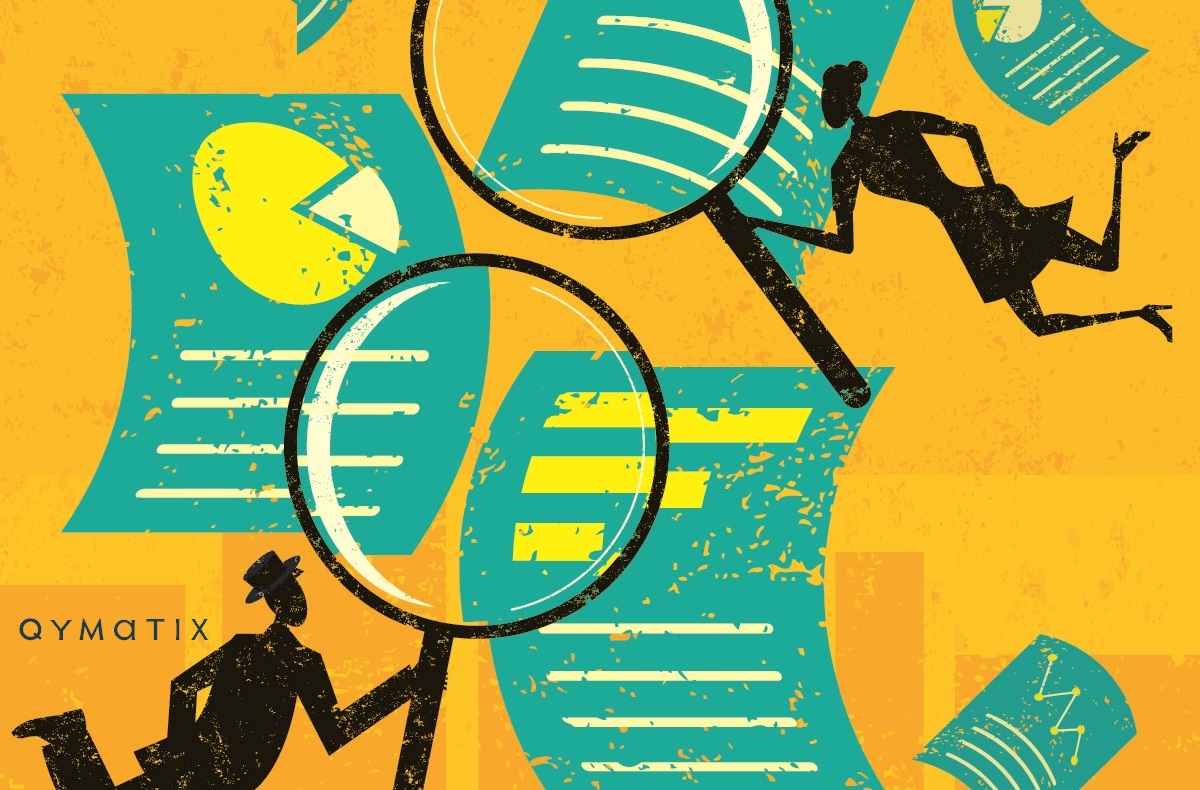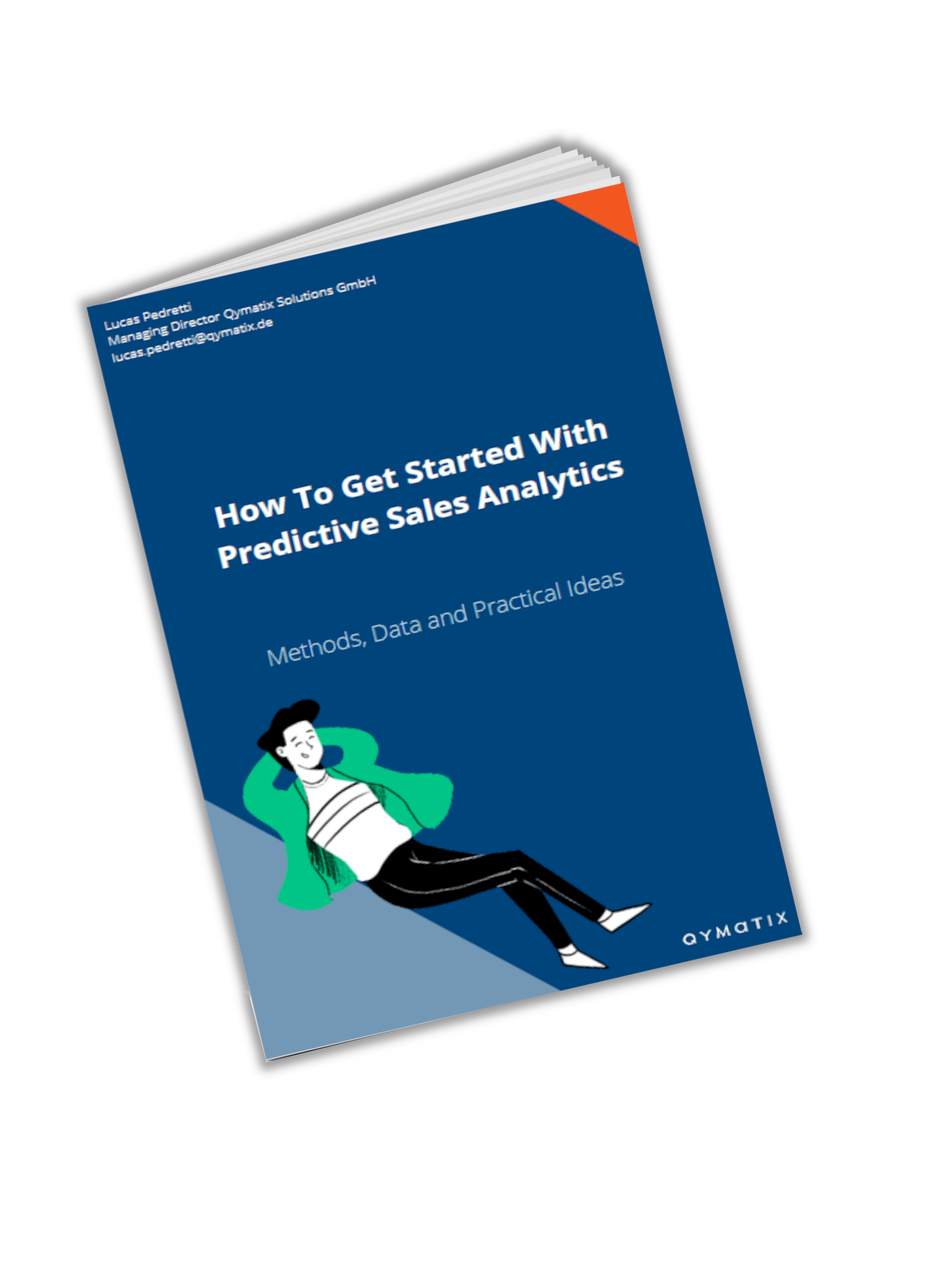How to measure ROI of advanced sales analytics projects

Please enter your Email address
Return on Investment (ROI) is one of the most popular evaluation metrics and performance measurement used in business analysis nowadays.
The ROI is a powerful tool for evaluating the performance of any financial investment, in this case, advanced sales analytics projects and software.
Predictive analytics applies mathematical methods and techniques from data mining, statistics, machine learning, and artificial intelligence to make predictions.
Predictive Sales Analytics is used nowadays in applications such as lead scoring, pricing analytics, churn risk analysis and cross-selling, among others.
In this article, we provide you with some guidelines to calculate the ROI of sales analytics software.
What is the cost of B2B sales and the ROI of analytics projects
How do you calculate the return on investment? In purely economic terms, ROI is a useful way of recognising profits concerning capital invested.
In the case of B2B sales, this capital invested represents the direct cost of sales teams and activities. Remember that in business-to-business, sales teams still represent one of the most expensive resources.
To calculate the ROI of sales, we need to focus on the cost and value drivers of the sales management and team.
On the one hand, we will have the total cost of running a sales operation, including salaries, travel expenses, and the required investment of a sales analytics tool or software.
On the other hand, we will have to compare the profits derived from the application of predictive analytics methods in B2B.
In short, the Return on investment (ROI) of sales analytics projects in B2B represents the expected benefit of a company resulting from the usage of predictive sales software or similar BI solution for sales.
A high ROI means that the sales analytics software gains compare favourably to its level of investment. Let’s make one example.
Example of an average ROI for Predictive Sales Analytics
To calculate the ROI of a predictive sales analytics project, take first the average yearly gross salary and total expenses of the sales management team, together with that of its Key Account Managers (KAM). Now, list the set of activities costing this team most of the time. In this way, we will calculate the cost of sales.
For example, for a sales manager, try to calculate the total time spent on analytical activities. These activities might include the time looking for accounts with cross-selling chances, time spent in researching churn risk and pricing discrepancies. Non-facing customers activities should also include the time spent in sales planning meetings, time spent on coaching KAMs (for managers), and time spent on on-boarding of new Key Account Managers.
Similarly, for Key Account Managers, calculate the total time spent on non-customer facing activities (in hours per week, for example). Take for instance the time spent looking for cross-selling opportunities with existing customers; the time spent researching accounts at risk of churning; the time spent dealing with pricing inconsistencies in existing customers. Add to this list the time spent discussing sales plans with management and the time spent travelling to a customer. You will not get an exhaustive listing, but you should consider your primary cost drivers.
Now, with this record in hand, and using the cost per hours of your sales management and team, start assuming possible expected improvements derived from the usage of predictive sales analytics. Common benchmarks begin at 5% and can go up to 25%. Assume something that you find reasonable for your situation.
For example, for an average team of one sales manager and five KAMs, with a cost of around € 100,000 each, expected benefits could reach € 250,000 per year (using a 10% improvement in efficiency as the benchmark).
Secondly, take the number of new projects or sales opportunities with existing customers, and then assume an Improved Opportunity Win Rate and an Increased Average Deal Size, as a consequence of a better pricing strategy and the focus on cross-selling opportunities.
For instance, for a company with an average of 200 projects a year, a win rate of 30% and average deal size of €0.5M, improvements of 5% could represent gross benefits increase of around €0.9M per year.
For this example, the revenue benefits of a sales analytics solution in B2B, in summary:
| For sales managers | Benchmark (low-high) | Expected Benefit |
| Improved Opportunity Win Rate | 5 % to 15 % | € 450,000 |
| Increased Average Deal Size | 5 % | € 450,000 |
| Faster On-Boarding of KAM | 5 % to 20 % | € 160,000 |
| Reduced Number of KAMs on ramp-up | 5 % | € 80,000 |
| Improved Sales Management productivity | 5 % to 20 % | € 20,000 |
| Improved KAM productivity | 5 % to 20 % | € 40,000 |
| Total Benefits | ca. € 1,000,000 |
Using an estimated gross margin of 30 %, profit from revenue increase (at this gross margin 30 %), net benefits could start at € 0.3 M per year.
Finally, the ROI of a predictive sales analytics solution will be calculated dividing the expected net benefits by the extra costs of the solution. For a € 100,000 per year sales analytics project, a company could quickly top a 300 % ROI.
What could it the real costs of implementing predictive sales analytics represent? The exact level of investment, of course, depends heavily on the current ERP and CRM systems a company is using and the type of solution they chose to perform predictive analytics.
Why implement a predictive sales analytics solution now?
While some applications of predictive analytics were commercially unappealing years ago, improvements in infrastructure and increased amounts of data, have made of predictive analytics a must-have in B2B sales.
There are first the attractive financial benefits of predictive analytics. Predictive analytics has demonstrated revenue growth and cost reduction over many business units, including sales and marketing.
If this ROI calculation did not convince you, consider the cost of opportunity of leaving money on the table to your competitor.
At the end of Forbes recently wrote that “Sales organisations plan to increase their use of sales analytics 58 % from 2015 to 2016.” Plainly said, your competitor is probably already gaining an advantage by using it. An estimated 300 % ROI will provide any company with additional resources to re-invest in sales or marketing activities.
Due to its high ROI, predictive analytics offers an “unfair” competitive advantage. The incredibly compelling ROI of predictive analytics makes taking no action a risky path.
CALCULATE NOW THE ROI OF QYMATIX PREDICTIVE SALES SOFTWARE
The Costs of B2B Sales and The Return on Investment of Predictive Sales Analytics – Summary:
Predictive analytics uses data mining methods, machine learning, and artificial intelligence to make predictions concerning customers, sales leads, and products. It has become an unavoidable technology to remain profitable in competitive B2B markets. Successful companies commonly apply Predictive Analytics to lead scoring, churn risk analysis, pricing analytics, and cross-selling.
In this article, we presented a guideline to calculate the ROI of Predictive Analytics. ROI analysis is maybe the most appropriate tool for evaluating the performance of predictive analytics software.
We discussed first the cost of sales, including its primary cost drivers in B2B. We then make founded assumptions about the expected monetary benefits of applying predictive analytics.
Every situation is different, and therefore our assumptions might not be the same as yours. Do you have further questions about advanced analytics? Contact us today. We are happy to help you to calculate the ROI you can expect from Predictive Sales.
CONTACT US TODAY FOR YOUR PERSONAL CALL
Free eBook for download: How To Get Started With Predictive Sales Analytics – Methods, data and practical ideas
Predictive analytics is the technology that enables a look into the future. What data do you need? How do you get started with predictive analytics? What methods can you use?
Download the free eBook now.
- We will use this data only to contact you for discussing predictive sales KPIs. You can read here our declaration on data protection.

Is your sales too expensive? Read these related articles:
B2B Sales Manager Salary in Germany – How much are they doing?
What is the fuzz about Predictive Analytics? One example of B2B Sales will make you start today.
Further Read::
Boosting your sales ROI: How digital and analytics can drive new performance and growth – McKinsey
“Companies using sales analytics improve their Sales & Marketing ROI by 15 – 20 percent.” McKinsey
“Sales organizations plan to increase their use of sales analytics 58% from 2015 to 2016.” Forbes.

